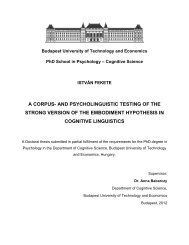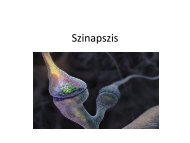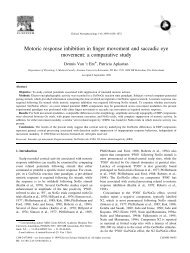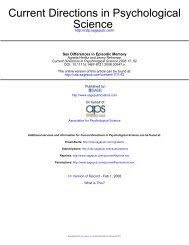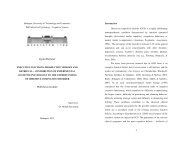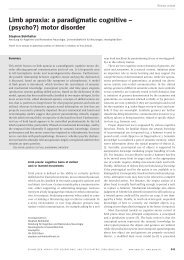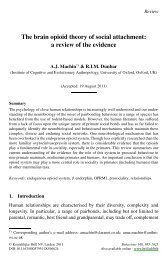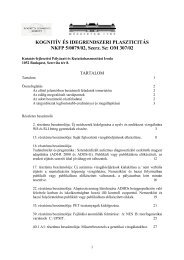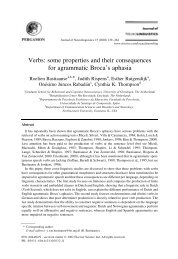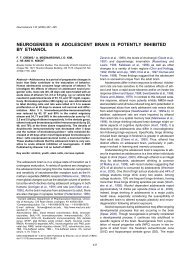Gyula Demeter
Gyula Demeter
Gyula Demeter
You also want an ePaper? Increase the reach of your titles
YUMPU automatically turns print PDFs into web optimized ePapers that Google loves.
guided antisaccade task. However, another study found no significant difference between the<br />
antisaccade error rates except on the latency of antisaccades which were slower in the OCD<br />
group (Maruff, Purcell, Tyler, Pantelis, & Currie, 1999). A more recent work also supports<br />
this finding, the OCD group showed higher frequencies of anticipatory saccades with reduced<br />
amplitudes only on the predictive saccade task (the timing, amplitude and direction of the<br />
targets are predictable) which relies mainly on the circuits between the frontal eye field and<br />
basal ganglia and presented a similar performance pattern as the normal subjects on the<br />
antisaccade task which predominantly involves the dorsolateral prefrontal cortex (Spengler et<br />
al., 2006).<br />
From these findings it can be concluded that the results in these paradigms are strongly<br />
influenced by the characteristics of the tasks, by the exposition times, by the inter stimulus<br />
intervals, by the predictability of the targets and by the proportion of Go and NoGo responses<br />
which must be taken into account in futures studies. The low performance on cognitive and<br />
motor inhibition neuropsychological tasks supports the theory of frontostriatal dysfunction in<br />
OCD (Savage, 1998; Penades et al., 2007). Chamberlain et al. (2005) consider that deficits at<br />
the level of inhibition mechanism are responsible for the main symptoms and<br />
neuropsychological profiles in OCD.<br />
As it can be seen through the overview of the most relevant findings from the executive<br />
functions literature the most common approach to investigate neuropsychological profiles in<br />
OCD has been to compare the performance levels on different neuropsychological tests to<br />
healthy controls.<br />
There is a new direction toward the identification of different neuropsychological<br />
profiles for OCD subtypes and also toward the establishment of different subgroups based on<br />
the neuropsychological performance patterns (Nedeljkovic et al., 2009). Postulating that there<br />
is an executive function deficit in OCD is a very broad assumption, and our aim was to focus<br />
on the most relevant executive components: inhibition and shifting.<br />
20



